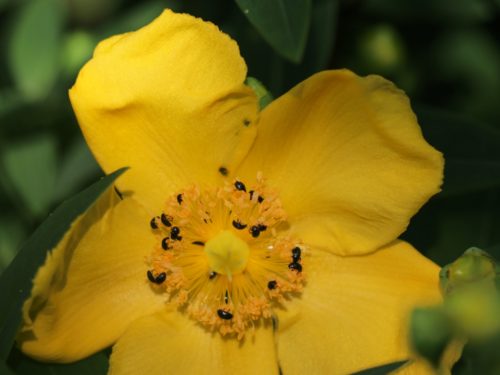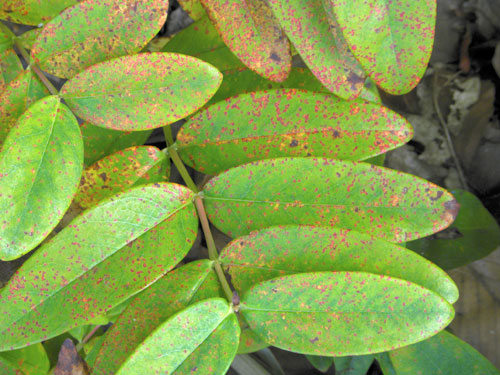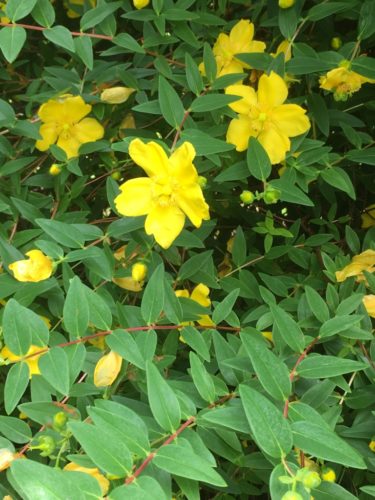St John’s wort, a family of shrubs and herbs.
Perforate St John’s wort (Hypericum perforatum) is also known as:
Common St John’s wort
You are viewing the mobile-adapted version of the page.
The one for tablets, laptop and desktop also provides general information, such as origin, toxicity and cultivation.
- Perforate St. John’s wort (Hypericum perforatum) is a medicinal herb; and toxic to livestock. St John’s wort ‘Hidcote’ (Hypericum patulum ‘Hidcote’) does not possess the medicinal properties of perforate St. John’s wort.
St John’s wort – (Hypericum), a family of shrubs and herbs. Perforate St. John’s wort (Hypericum perforatum) is among them, as well as the shrub St. John’s wort ‘Hidcote’ (Hypericum patulum ‘Hidcote’), which is found in many ornamental gardens.
Perforate St. John’s wort is a medicinal herb: it is a mild antidepressant.
St John’s wort ‘Hidcote’ is a hardy shrub that can grow 80 to 100 cm tall and blooms from late July through October with brilliant yellow flowers. Orange/brown berries appear in autumn.
St John’s wort likes sun to light shade and a nutrient-rich, slightly moist, well-drained soil. St John’s wort ‘Hidcote’ is hardy and keeps its leaves in winter. It’s a strong shrub that is not susceptible to fungi and diseases.
Bugs

Small holes in the flowers and leaves: flea beetle (Psylliodes).
Fungi & diseases

Yellow spots on the leaves and orange-like spots on the underside. The yellow spots turn dark brown, after which the leaves fall off. A severe infestation can lead to early leaf drop: Hypericum rust (Melampsora hypericorum).
Other
In prolonged, severe frosts and high winds, the leaves can dry out and fall off.

